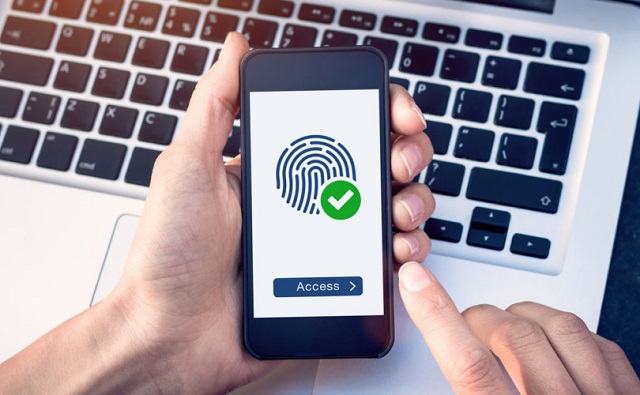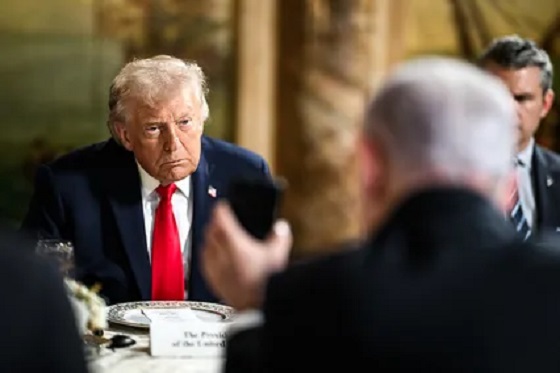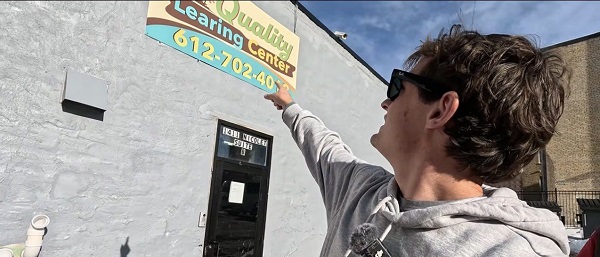National
Graves and school murders? What were we thinking?

From the Frontier Centre for Public Policy
The year 2021 was the year of the Kamloops graves.
It was the top news story of the year. It was reported by CBC and all mainstream media that ground penetrating radar had detected remains of 215 indigenous children who were found buried in the old apple orchard on the grounds of the former Kamloops Indian Residential School.
The burials had taken place in secrecy in the middle of the night. Priests and nuns, who were apparently responsible for the deaths, wanted to hide the results of their crimes and forced students, “as young as six” to dig the graves of their dead classmates.
Indigenous leaders claimed there were tens of thousands more murdered and secretly buried indigenous children across the length and breadth of Canada — children who “went to residential school and never returned.”
The Trudeau government ordered flags flown at half mast, where they remained for six months. It made $320,000,000 available to indigenous communities that wanted to search for more missing children. Many accepted the offer.
2023 was the year this whole story fell apart.
There were no secretly buried children.
There were no “thousands of missing children.”
The junior ground penetrating radar operator, Sarah Beaulieu, who made her sensational claim in 2021, had most likely mistaken the remnants of 1924 septic field trenches for graves.
The indigenous children who died at residential schools mostly died of tuberculosis, as did those who never attended a residential school. Most were buried on their home reserves and their burial places had simply been forgotten.
Simply put, all of the hysteria of 2021 over secret burials and missing children was for nothing. Canada had fallen for the biggest fake news story in the history of the nation.
A new book of essays by Professor Tom Flanagan and CP Champion examines how this false story took hold and how it was debunked.
Tom Flanagan is Canada’s foremost expert on indigenous issues. Champion is the editor of the Dorchester Review, where many of these valuable essays can be found.
The essays tell the story of how Canadians fell for a story that made no sense from the outset. Why would priests kill and secretly bury children? There was no historical record of any such events ever happening.
If the children went to the residential school “and never returned” wouldn’t there be some record of such a thing happening — a parent complaining, a police report, a complaint to a chief etc.? But there was no such thing.
The odd thing is that neither CBC nor practically any other reporter asked any such questions. They not only repeated the false claims, they amplified and exaggerated them. So 215 “soil disturbances” (which is what the radar had detected) became “human remains,” “bodies,, “graves” and even “mass graves.”
Conrad Black wrote the foreword to the book. Black is one of the few Canadians who recognized from the outset the Kamloops claim was absurd. Black was also one of the few writers who has consistently denounced the disgraceful claim that Canada is guilty of any kind of genocide.
He properly criticized former Chief Justice Beverly McLachlin when she first put forward the baseless claim in 2015 and he has consistently defended Canada against such slander.
The writers (disclosure: I am one) systematically take apart the false Kamloops and copycat claims. Professor Jacques Rouillard, using research done by Nina Green proves the deaths of the KIRS students who died while enrolled at the school were properly documented, that the deaths were mainly from the diseases of the day and that the children were almost all buried on their home reserves.
These children had not been buried in secrecy, they were never “missing” and there was absolutely nothing sinister about their deaths.
Children from the community who attended day schools, or didn’t attend school at all, died in similar numbers from the same diseases. Death from disease was simply a sad fact of life and had nothing to do with whether or not a child attended a residential school.
The only “evidence” that could possibly support the secret burial thesis — apart from the usual conspiracy theories that are told in every community — was the report from Sarah Beaulieu of soil disturbances detected by ground penetrating radar that she opined could be possible graves.
However, on closer inspection these claims fall apart. The authors expose Beaulieu’s negligence in failing to research previous excavations before recklessly venturing an opinion on such an important matter.
Her other mistaken assumptions, such as false reports about a child’s tooth and bone, are also exposed. It is noteworthy the T’kemlups Band originally promised to release Beaulieu’s report to the public but reneged on that promise when it became apparent the report was unreliable, just as they have reneged on their stated intention to excavate.
The other essays examine the other claims made about evil priests, secret burials and missing children. The authors systematically dissect the claims, and expose them as the false claims that they are.
As for the claim there are “thousands of missing children” who are alleged to have entered residential schools “and never returned” to their parents, and now lie in “unmarked graves” Professor Flanagan puts it succinctly: These are not “missing children” — they are “forgotten children.” They now lie in unmarked graves for the simple reasons that their families didn’t keep up their gravesites and forgot about them.
The current grave-searching mania now occurring in indigenous communities is fueled by the $320,000,000 that then Indigenous Affairs Minister Marc Miller dangled before poor indigenous communities like golden carrots.
Other essays in the book examine other common misconceptions about residential schools, generally. One of the most persistent is the claim — consistently made by CBC for two decades — that “150,000 children were forced to attend” residential schools.
This claim is completely untrue.
Prior to 1920, status Indian parents were not required by law to send their children to any school — and most didn’t. After 1920, status Indian parents could choose between sending their children to day schools or residential schools. It is only where no day school was available that parents were required to send their children to residential schools.
But even then, there was seldom enforcement of that law. Only in the case of orphans or severe child neglect (usually due to alcohol abuse) was parental consent dispensed with (for obvious reasons).
CBC has been advised of their repeated reporting error, but continues to push this misinformation. Their justification for doing so is a word salad of obfuscation that is either meant to mislead or shows incompetence on their part.
In sum, the hysteria following the May 2021 announcement 215 “graves” had been discovered at Kamloops is not something that is easily explained. Why most Canadians seemed willing to accept such a preposterous claim in the first place will be a subject for historians and psychologists for decades.
Why the Trudeau government — without a shred of real evidence — ordered flags lowered for months; why the CBC and other mainstream media failed to ask even the most elementary questions about claims that they must have known were false; why indigenous leaders decided to put forward a false narrative that they must have known would eventually be exposed as a fraud — these are all questions examined in the revealing essays in this important book.
Although CBC — and even government publications — continue to put out fatuous claims about “graves,” “probable graves” and “human remains” the international community concluded some time ago that Canada succumbed to some kind of mass hysteria in May 2021, when the preposterous Kamloops claim was first made.
Was this national gullibility related to the strange lockdown years? Was it “Canada’s George Floyd moment? Was it “Canada’s woke nightmare?”
These are questions readers can ask themselves when reading these essays. Professor Flanagan and Chris Champion deserve a lot of credit for swimming against a tide of wokeness to put out this important book.
They are part of a research group — not afraid to be called “deniers” — who wrote the essays published in the book and initiated the Indian Residential School Research Group where additional information can be found.
For original documents and primary sources readers can go to indianresidentialschoolrecords.com.
In May of 2021, Canadians fell for “fake news”. There is an old saying: “Fool me once, shame on you. Fool me twice, shame on me”.
This book should be read with that saying in mind.
Together with the question: “What were we thinking?”
Brian Giesbrecht, retired judge, is a Senior Fellow at the Frontier Centre for Public Policy.
Bruce Dowbiggin
The Rise Of The System Engineer: Has Canada Got A Prayer in 2026?

“Of all tyrannies, a tyranny sincerely exercised for the good of its victims may be the most oppressive. It would be better to live under robber barons than under omnipotent moral busybodies.” C.S. Lewis
One of the aims of logical positivism has been Boomers’ quest to kill Western religion and the pursuit of faith in order to make room for the state. Symbols are banned. Churches are burned. Infidels are rewarded. Esoteric faith systems applauded. Yet, as 2026 dawns, it appears that, not only is traditional religion not dead, it might just be making a comeback with younger generations who’ve grown skeptical of their parents’ faux religion of self.
How? In an age of victim status, traditional religion is suddenly a cuddly TikTok puppy. Hard to imagine that the force that spread imperialism and war across the globe for centuries being a victim. But yes. Only Christians and Jews are singled out for censure In Carney’s Canada The zeal to repeal God has backfired. Faith is off the canvas and punching back. (And we are NOT talking about the Woke pope.)
The purveyors of “old-time religion” will still find themselves facing a determined opponent well on the way to moral inversion. And a compliant population. As blogger Melanie in Saskatchewan points out, “Canadians were sold a calm, competent adult in the room. What they got was an unelected system engineer quietly converting moral claims into financial constraints. This is not leadership. It is non-consensual governance.

The freedoms that make dissent possible are being used to hollow out dissent. The protections meant to guard against abuse are being used to avoid scrutiny. And the law—stripped of its moral imagination—is asked to do what it cannot: resolve psychic conflict through paperwork.”
The sophistry of the superior class demands submission. C.S. Lewis warned of this inversion in God In The Dock. “To be “cured” against one’s will and cured of states which we may not regard as disease is to be put on a level of those who have not yet reached the age of reason or those who never will; to be classed with infants, imbeciles, and domestic animals.”
In Canada that compliant class has embraced Mark Carney as the great stabilizer. “Canadians keep asking the wrong question about Mark Carney,” says blogger Melanie in Saskatchewan. “They keep asking whether he is a good politician. That is like asking whether a locksmith is a good interior decorator.
Carney is not here to govern. He is here to re-engineer the operating system of the country while the Liberal Party provides the helpful stage props and applause track. And judging by how little scrutiny this government receives, the audience seems perfectly content to clap at whatever is placed in front of them, provided it comes with soothing words like “stability,” “resilience,” and “the experts agree”.
Adds Dr. Andrea Wagner, Canadians “hide behind procedure. Behind policy. Behind institutions. Behind NDAs. Behind committees, processes, protocols. Behind phrases like “we’re reviewing this internally” and “that’s beyond my authority.” They hide behind the pretense of empathy while quietly perpetuating injustice. They hide behind performative busy-ness: “I wish I had time,” “I’m swamped,” “I’ve been unwell.” There is enormous power in powerlessness—and Canadians wield it masterfully.”
The problem, says Melanie in Saskatchewan, is not that Mark Carney in full power is incompetent. The problem is that he is extremely competent at something Canadians never actually consented to. Technocrats redesign the machinery so that the outcome becomes inevitable. No messy debate. No inconvenient voters. No public reckoning. Just “the framework,” “the model,” “the standard,” and eventually the quiet conclusion that there is “no alternative.”
And this is precisely the world Mark Carney comes from. ”He did not rise through grassroots politics or party service. He rose through central banks, global finance institutions, and elite climate-finance bodies that speak fluent acronym and consider democracy an optional inconvenience. The man does not campaign. He architects.”
While the Conservative Party of Canada still polls evenly with the Liberals they are playing a different game, one they— with their traditional tactics— are not wired to win in a battle of systems with Carney. This cringeworthy “Keep It Up” endorsement of Carney by former CPC leader Erin O’Toole speaks to why they are further from power than ever.
The manufactured crisis over indigenous Rez school graves illustrates the method. “To call out intimidation or dehumanization is to risk being reframed as the aggressor. The person who names harm becomes the disturbance; the one who weaponizes grievance becomes the protected party. Justice no longer asks what happened, only who claims injury first. This is not accidental. It is the logical endpoint of a culture that has confused victimhood with virtue and pain with authority.

Suffering, once something to be alleviated, has become something to be curated. Identity now precedes evidence; accusation outruns inquiry. The system does not ask whether harm is real or proportional—only whether it can be procedurally contained. And containment, I am learning, is often preferred to truth.”
There are still some who believe there remains a way out of this. Here’s Paul Wells on Substack with a valid conclusion— which most sentient people reached by the end of Trudeau’s first term. “Canada has spent too long thinking of itself as a warehouse for the world instead of designing and building for itself. It’s time for a shared mindset of ambition quality and real investment in physical and human capital so Canadians become Canada’s designers and builders of livable cities rather than bystanders to our own future.”
But it’s hard to square that with the gap Carney’s already has. “The tragedy is that the Liberal Party is perfectly happy to hand (Carney) the country and then scold the public for noticing. If Canadians want a future where choices are still made by voters instead of algorithms and advisory panels, they are going to have to stop applauding this performance and start asking the one question that truly terrifies technocrats and their obedient political enablers.”

This system monolith taking over life is why the abrasive, defiant Donald Trump emerged. Vast segments of America employ him to defy the EU scolds with their censorship regimes. His defiance is categorical— which is why it frightens Canadians. The man from Mitch & Murray delivered a few truths to them and they soiled themselves. Paradise will never be the same!. Bad Trump! But an almost-octogenarian has little runway left himself. Who can continue the resistance to the Carney system engineers?
In the past organized religion was a refuge from the maelstrom of the secular storm. There was comfort in the message. Thus, the Liberals’ current need to destroy faith. So the epidemic of churches burned is ignored. The intrusive demonstrations of militant Islam are tolerated. (Carney says Muslim virtues are Canadian virtues.) History is re-written. Heroes debunked.
If Soviet Russia is any indication, the traditional faiths can survive and act as a bulwark against the technocrats— if they find their Pope John Paul II.. The Catholic and Orthodox faiths furnished a way out from behind the Iron Curtain. As organizations not co-opted by the state in the West religions can provide a moral backbone to expose and defeat the secular globalists.
Whether you are a believer or not they provide a pushback to restore the moral clarity C.S. described. It’s not too late as 2026 dawns. But if nothing is done in the West — if Canada accepts EU censorship and global ID— then writing this column in 2027 could well be defined as a criminal act.
“That which you most need will be found where you least want to look.” Carl Jung
Bruce Dowbiggin @dowbboy is the editor of Not The Public Broadcaster A two-time winner of the Gemini Award as Canada’s top television sports broadcaster, his 2025 book Deal With It: The Trades That Stunned The NHL And Changed Hockey is now available on Amazon. Inexact Science: The Six Most Compelling Draft Years In NHL History, his previous book with his son Evan, was voted the seventh-best professional hockey book of all time by bookauthority.org . His new poetry collection In Other Words is available via brucedowbigginbooks.ca and on Kindle books at https://www.amazon.ca/dp/1069802700
Business
The great policy challenge for governments in Canada in 2026

From the Fraser Institute
According to a recent study, living standards in Canada have declined over the past five years. And the country’s economic growth has been “ugly.” Crucially, all 10 provinces are experiencing this economic stagnation—there are no exceptions to Canada’s “ugly” growth record. In 2026, reversing this trend should be the top priority for the Carney government and provincial governments across the country.
Indeed, demographic and economic data across the country tell a remarkably similar story over the past five years. While there has been some overall economic growth in almost every province, in many cases provincial populations, fuelled by record-high levels of immigration, have grown almost as quickly. Although the total amount of economic production and income has increased from coast to coast, there are more people to divide that income between. Therefore, after we account for inflation and population growth, the data show Canadians are not better off than they were before.
Let’s dive into the numbers (adjusted for inflation) for each province. In British Columbia, the economy has grown by 13.7 per cent over the past five years but the population has grown by 11.0 per cent, which means the vast majority of the increase in the size of the economy is likely due to population growth—not improvements in productivity or living standards. In fact, per-person GDP, a key indicator of living standards, averaged only 0.5 per cent per year over the last five years, which is a miserable result by historic standards.
A similar story holds in other provinces. Prince Edward Island, Nova Scotia, Quebec and Saskatchewan all experienced some economic growth over the past five years but their populations grew at almost exactly the same rate. As a result, living standards have barely budged. In the remaining provinces (Newfoundland and Labrador, New Brunswick, Ontario, Manitoba and Alberta), population growth has outstripped economic growth, which means that even though the economy grew, living standards actually declined.
This coast-to-coast stagnation of living standards is unique in Canadian history. Historically, there’s usually variation in economic performance across the country—when one region struggles, better performance elsewhere helps drive national economic growth. For example, in the early 2010s while the Ontario and Quebec economies recovered slowly from the 2008/09 recession, Alberta and other resource-rich provinces experienced much stronger growth. Over the past five years, however, there has not been a “good news” story anywhere in the country when it comes to per-person economic growth and living standards.
In reality, Canada’s recent record-high levels of immigration and population growth have helped mask the country’s economic weakness. With more people to buy and sell goods and services, the overall economy is growing but living standards have barely budged. To craft policies to help raise living standards for Canadian families, policymakers in Ottawa and every provincial capital should remove regulatory barriers, reduce taxes and responsibly manage government finances. This is the great policy challenge for governments across the country in 2026 and beyond.
-

 Energy1 day ago
Energy1 day agoRulings could affect energy prices everywhere: Climate activists v. the energy industry in 2026
-

 Digital ID1 day ago
Digital ID1 day agoThe Global Push for Government Mandated Digital IDs And Why You Should Worry
-

 Bruce Dowbiggin1 day ago
Bruce Dowbiggin1 day agoThe Rise Of The System Engineer: Has Canada Got A Prayer in 2026?
-

 International1 day ago
International1 day agoMaduro says he’s “ready” to talk
-

 International1 day ago
International1 day agoLOCKED AND LOADED: Trump threatens U.S. response if Iran slaughters protesters
-

 International4 hours ago
International4 hours ago“Captured and flown out”: Trump announces dramatic capture of Maduro
-

 International3 hours ago
International3 hours agoTrump Says U.S. Strike Captured Nicolás Maduro and Wife Cilia Flores; Bondi Says Couple Possessed Machine Guns
-

 Business3 hours ago
Business3 hours agoVacant Somali Daycares In Viral Videos Are Also Linked To $300 Million ‘Feeding Our Future’ Fraud





